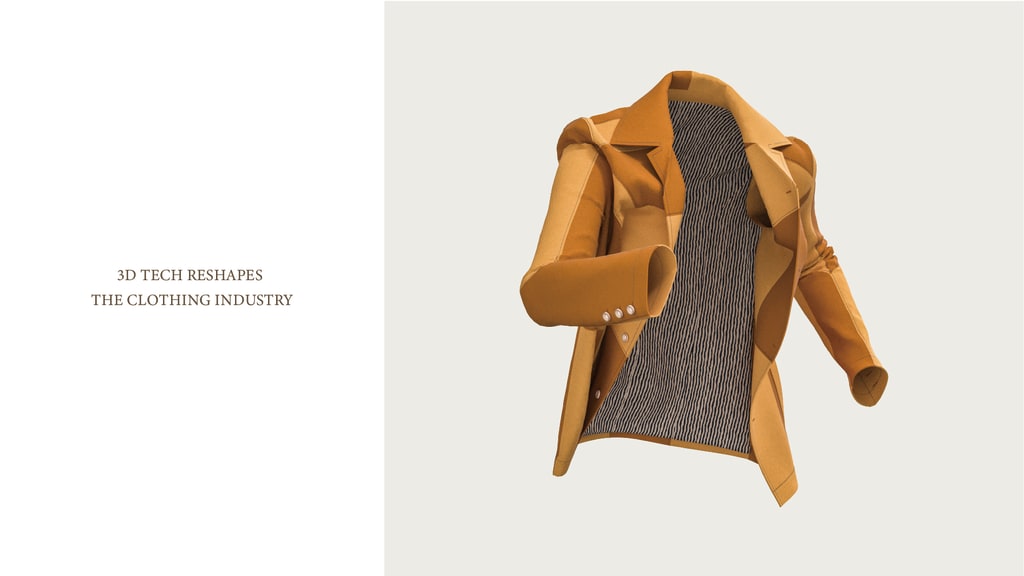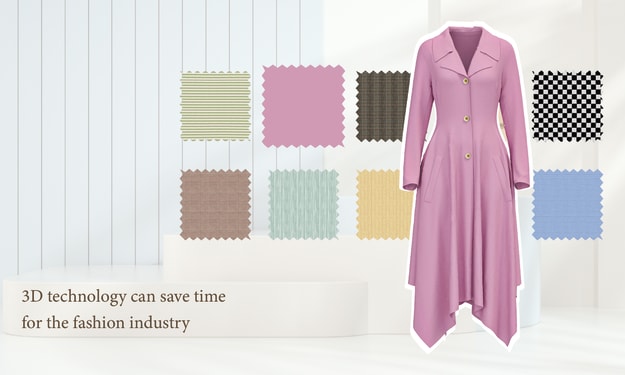
Five years ago, 3D fashion seemed to only exist in curricula of fashion design schools. However, since the hit of COVID-19 pandemic in early 2020, the whole fashion & apparel industry has started to rely more on digital clothing technologies. Taking into account of its various benefits, the 3D fashion design will definitely become a industry trend. But we never expected the impact of 3D clothing technology would sweep the whole industry so quickly - from sketching, sampling to fitting. Such sudden shift, of course, caused some problems related to the practical application of such technology in the garment development process, of which the most crucial one is requiring designers to transit from 2D fashion design to 3D clothing development.
“There is a boom in 3D clothing tech during recent years. Many apparel enterprises tried to utilize 3D design technology in their garment development process,” said Elisa Li, who holds a position of fashion designer in one of the biggest womenswear brand in China. Her company started to introduce 3D fashion design to its product development process last year when the whole clothing industry was hit by the pandemic and had to work remotely.
“3D tech will eventually dominate the whole apparel industry. The pandemic only sped up the progress. ” Plus, as Elisa pointed out, transition from 2D to 3D is not easy.
Problem 1: Skill Gap
“The first hurdle is the skill gap, of course,” Elisa said, “My company did arrange some tutorials, but I may get stuck like five times a day when I use the CAD software for designing.” 3D fashion design is basically a computation-intensive technology. For designers, like Elisa, who has barely no 3D modelling knowledge before, the 3D onboarding process is extremely tough, especially some 3D fashion design software is complex and not user-friendly.
Actually, the successful adoption of 3D technology to fashion design and sample producing processes require countless tutorials and practice. Facing to the challenge of training staff while operating business as usual, some companies let fashion designers work with 3D pattern makers, who are more proficient at using 3D digital tools. The former focuses on assisting designers to make design sketching and pattern making processes more efficient with 3D virtualization. While, some companies turn to 3D digital clothing service platforms for help. Digital clothing solution providers like Seemsay, offer 3D garment rendering and digital material sourcing services, and allow online communications across the supply chain.
Problem 2: Worries about Loss of Creativity
For designers, the designing perception utilized in working with 3D clothing technology is totally different from sketching in 2D. “Fashion design is an emotional thing,” Elisa continued, “I was used to touching the texture of fabric with my hands, and feeling the materials with my fingers. But now, all the tactical properties become data in the computer.”
Designers are of the option that the computer-aided design is far away from emotional. Labeled as such because the automatic technology depends on logic-driven algorithm. Designers worry that creativity and human judgement are lost when there are too much controls of data and predictive modeling.
On the contrary, 3D tech will lead to more creativity and self-expression. 3D clothing technology can generate garment prototype in a virtual-real environment. Moreover, the high efficiency of such automated technology allows designers to have more time and freedom to actualize their ideas. In respect to the bold conception which cannot be realized by conventional method, 3D tech is undoubtedly a better option.
Problem 3: Digital Materials
The last but not the least is about digital materials used in photorealistic 3D garments. Theoretically, 3D clothing tech allows designers to create any material they can imagine, but designers must use real-life materials in their work in order to manufacture the physical product. However, categories of fabrics and trims used in garment manufacturing are numerous, ranging from laces, leathers, woven, knits, buckles, buttons, zippers, etc. Each of these textiles and accessories has its own physical properties. Collecting the parametric data and scanning the materials are a long and tedious process.
Some luxury brands, like Tommy Hilfiger, chose to build its own digital material library. While more apparel companies turn to professional digital clothing providers for help. 3D fashion design software and 3D digital clothing platforms all have their built-in digital assets libraries. For instance, Seemsay has collected the data of nearly all clothing fabrics and trims available in the market as well as their manufacturing information, and digitized those materials with 3D tech for designer’ easy application to their work.
* * *
“It’s not just changing the designing medium,” Elisa said, “it’s about changing the way we create designs.” Barriers of changing to 3D sketching is more like a shift in mindset. In the future, designer will be a concept artist with 3D sampling knowledge, who can work closely with 3D pattern makers and sample developers to create 3D clothing samples.
“Transition to 3D is difficult,” Elisa admitted, “but it’s a must.”
About the Creator
Seemsay
We talk about fashion, styles, 3D fashion design and other things related to the apparel and clothing industry. We operates an easy-to-use 3D digital clothing industry service platform.






Comments
There are no comments for this story
Be the first to respond and start the conversation.